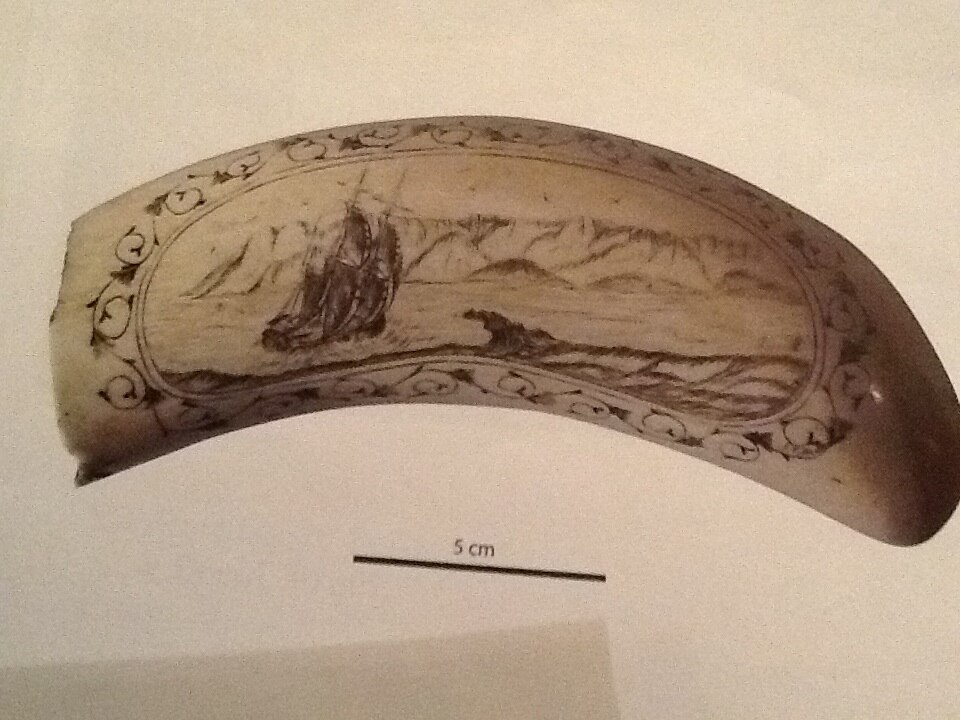How the Wardlaw got its Tooth
Frank Quinault completes the scrimshaw story
In his article ‘A Treasure in the Wardlaw Museum’, in the last issue of St Andrews in Focus, Connall Treen told “the extraordinary story of a whale’s tooth”. It is indeed a fascinating tale and there is another part to it that a St Andrews audience ought to hear.
The late Dr Robert Prescott came to St Andrews in 1974, as a lecturer in the School of Psychology. His background in ethology and zoology helped to direct the emerging School towards the studies of animal behaviour that became one of its key strengths. St Andrews was an ideal destination for Bob because of his other lifelong interest – the sea and sailing.
He soon became actively involved with the Scottish Fisheries Museum in Anstruther, where he led the initiative to restore Reaper, the former Fifie sailing herring drifter. In 1984 he co-founded, and was Director of, the Scottish Institute for Maritime Studies. Among other achievements, the Institute won funding for a major project to determine the criteria for admission to a national register of Britain’s historic vessels, which the Institute established.
Bob made a remarkable contribution to marine heritage conservation and research projects, both before and after, his retirement in 2001. He made numerous radio and TV broadcasts; some of which are available on the BBC website. He served on the councils of many national bodies, finally accepting the Chair from 2006 to 2012 of the UK Government’s Advisory Committee on National Historic Ships.
Charles Darwin was always Bob’s scientific hero; in 2003 (the year in which Beagle 2 set off for Mars) Bob began his search for the final resting place of HMS Beagle, the ship that was Darwin’s home for five years from 1831, after a voyage which Darwin later described as “by far the most important event in my life” that has “determined my whole career.” When its service with the Admiralty came to an end, HMS Beagle became a coastguard watch vessel on the lookout for smugglers in the creeks of the Essex marshes, before finally disappearing from view deep below the mud.
The search for what remains of it, combining archival, cartographic, archaeological, and geophysical techniques, is as enthralling as a good detective story and can be heard, in Bob’s own words, in a Royal Society lecture he gave in 2009 at: https://royalsociety.org/science-events-and-lectures/2009/marine-archaeology/
The lecture ends with a brief mention of the St Andrews connection. Not long before, on leaving a meeting of the St Andrews Preservation Trust, Bob spotted a piece of scrimshaw on a table of exhibits that had been laid out, unattended, for the interest of children. He was uniquely placed to realise its significance, as one of very few surviving artefacts from the HMS Beagle, and its monetary value, as confirmed soon after by the sale of an almost identical piece for several tens of thousands of pounds at auction.
How did the Preservation Trust come to acquire the scrimshaw? Samantha Walker, the Trust’s Museum Curator, has established that it was one of a number of items belonging to D’Arcy Wentworth Thompson that were donated, most probably by his daughter, Barbara, when the Trust first started its collection in about 1962; but the records gave no hint of its importance. D’Arcy was another of Bob’s heroes and it is entirely fitting that the scrimshaw should now be on loan to the University as part of an exhibition of Oceanography – a field to which Darwin, D’Arcy, and Bob himself were all major contributors.
And that, Dear Reader, is How the Wardlaw got its Tooth!


